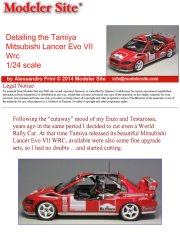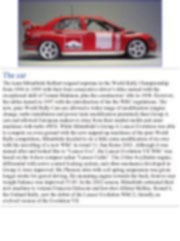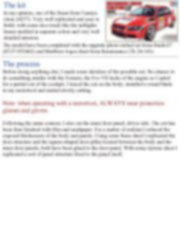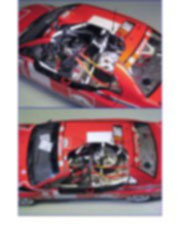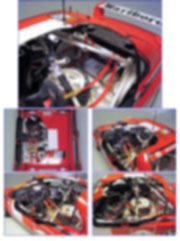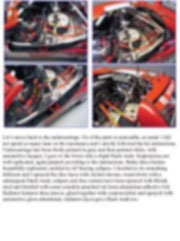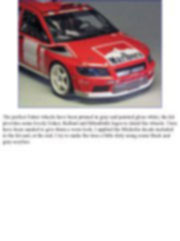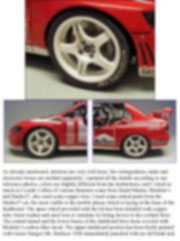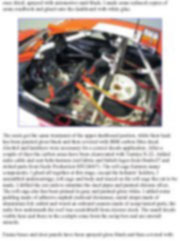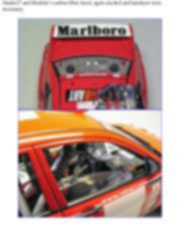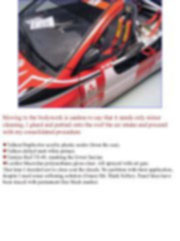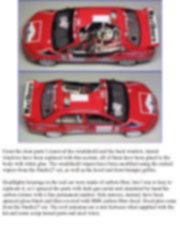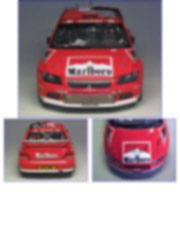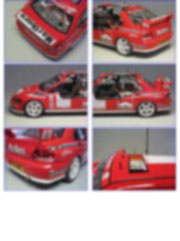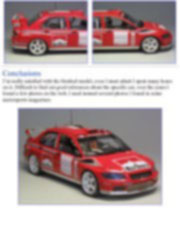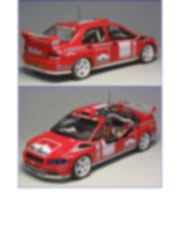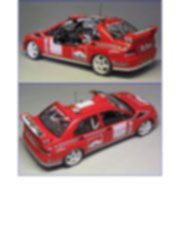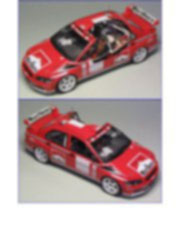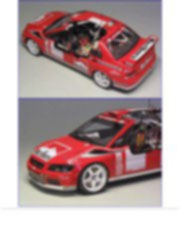|
Cars |
|
|||||||||||||||||||||||||
|
Detailing the Tamiya Mitsubishi Lancer Evo VII Wrc 1/24 scale |
||||||||||||||||||||||||||
|
by Alessandro Prini © Modeler Site |
||||||||||||||||||||||||||
|
Legal Notice No material from Modeler Site any Web site owned, operated, licensed, or controlled by Damian Covalski may be copied, reproduced, republished, uploaded, posted, transmitted, or distributed in any way, except that you may download one copy of the materials on any single computer for your personal, non-commercial home use only, provided you keep intact all copyright and other proprietary notices. Modification of the materials or use of the materials for any other purpose is a violation of Damian Covalski's copyright and other proprietary rights. Read More here > Legal notice Following the “cutaway” mood of my Enzo and Testarossa, years ago in the same period I decided to cut even a World Rally Car. At that time Tamiya released its beautiful Mitsubishi Lancer Evo VII WRC, available were also some fine upgrade sets, so I had no doubts …and started cutting.
The car The team Mitsubishi Ralliart reigned supreme in the World Rally Championship from 1996 to 1999 with their four consecutive driver’s titles earned with the exceptional skill of Tommi Makinen, plus the constructors’ title in 1998. However, the tables turned in 1997 with the introduction of the the WRC regulations. The new, pure World Rally Cars are allowed a wider range of modification (engine change, turbo installation and power train modification permitted) than Group A cars and allowed European makers to stray from their market molds and enter machines with turbo 4WD. While Mitsubishi’s Group A Lancer Evolution was able to compete on even ground with the new supped-up machines of the pure World Rally competition, Mitsubishi decided to do a little extra modification of its own with the unveiling of a new WRC in round 11, San Remo 2001. Although it was named after and looked like to “Lancer Evo”, the Lancer Evolution VII WRC was based on the 4-door compact sedan “Lancer Cedia”. The 2-liter 4-cylinder engine, differential with active control locking system, and other mechanics developed in Group A were improved. Mc Pherson strut with coil spring suspension was given longer stroke for gravel driving. By mounting engine towards the back, front to rear weight balance was improved 55:45. In the 2002 season, Mitsubishi entrusted their new machine to veteran Francois Delecour and hot-shot Allister McRae. Round 9, the Finland Rally, saw the debut of the Lancer Evolution WRC2, literally an evolved version of the Evolution VII.
The model have been completed with the upgrade photo-etched set from Studio27 (ST27-FP2462) and Marlboro logos sheet from Renaissance (Tk 24-141). The process Before doing anything else, I made some sketches of the possible cut. No chance to do something similar with the Ferraris, the Evo VII lacks of the engine so I opted for a partial cut of the cockpit. I traced the cut on the body, installed a round blade in my motortool and started slowly cutting. This note is offered in PDF format to be read or printed using Acrobat reader, contact our webmaster > Here Includes more than 45 pics, here we show only the text pages.
Esta Nota es ofrecida en formato PDF, el cual puede ser leído o impreso usando el Acrobat reader, contacte a nuestro webmaster > Aquí Incluye más de 45 imágenes, aquí solo mostramos las paginas de texto.
Big size photos are only available in our PDF format. Support us ordering our notes in PDF > Here |
||||||||||||||||||||||||||






